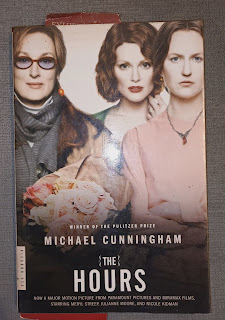Late to the Tesseract: Discovering A Wrinkle in Time (at My Age) and Other YA Books Worth Teaching
By a Lit Teacher Who Came for the Theology—and Stayed for
the Time Travel
I have a confession: I just read A Wrinkle in Time for
the first time.
Yes, that book. The one with tessering,
Mrs. Who, and the planet where everyone bounces balls in sync. The one I
somehow missed in childhood, skipped over in teacher trainings, and only
recently picked up because I’d fallen in love with Madeleine L’Engle’s Walking
on Water, her beautiful book on faith and art.
I expected something whimsical, maybe a little quaint.
Instead, I got Meg Murry.
I got a girl who doubts herself deeply but still shows up. A
child who fights conformity with nothing but a stubborn heart. A mother who
loves without limits. A cosmos that bends—not for power, but for love.
And now, even though I’ve taught literature for years, I’m
seeing young adult books in a new light—not as stories I’ve outgrown, but as
stories that meet readers where they are, whether they’re fifteen or, well…
not.
Why A Wrinkle in Time Is Still a Gift in
the Classroom
Teaching this book isn’t about nostalgia. It’s about giving
students a story that takes their moral imagination seriously.
Meg is a misfit, not a martyr. She feels her feelings
(loudly), questions adults, and keeps showing up even when she doesn’t believe
she can. She is, in other words, exactly like many of our students—and she gets
to be the hero.
There’s also something profound in the way L’Engle weaves
together physics, scripture, and emotional truth. For those of us who’ve read
her nonfiction meditations, it’s familiar terrain. She trusts that the sacred
and the scientific can co-exist. So can fear and love. So can doubt and faith.
(And yes—if they’ve only seen the film, they’ve missed the
point. The visuals may dazzle, but the soul of the book lives in its language,
its moral clarity, and its quiet theological courage.)
And that’s what makes the novel so teachable: it lets
teenagers be complicated—and still believe they’re capable of saving the world.
A Few More YA Books I’d Gladly Teach (and Re-read)
Here are some books I’ve either taught or read recently that
pair beautifully with A Wrinkle in Time—in tone, theme, or depth.
When You Reach Me by Rebecca Stead
Stead builds a quiet mystery around a girl receiving strange
notes that change how she sees her world. It’s essentially a love letter
to A Wrinkle in Time.
Best classroom use: Compare how both novels handle time, trust, and
the sacred ordinary.
The Giver by Lois Lowry
A classic for good reason. A world with no pain, no color,
no choice—and one boy who starts to see through it.
Pair with: L’Engle’s Camazotz for a discussion on control vs.
freedom.
The Book Thief by Markus Zusak
A story where books save lives—sometimes literally. Liesel
is another fierce young girl navigating unimaginable darkness with light and
language.
Use for: Voice, metaphor, and a gut-punch of a narrative.
Scythe by Neal Shusterman
It’s darker than L’Engle, but just as philosophically rich.
A society without death has to invent artificial mortality. What could possibly
go wrong?
For older teens: Lots of moral and theological angles to explore
here.
Orbiting Jupiter by Gary D. Schmidt
Short, powerful, heartbreaking. A foster kid searching for
his daughter.
Why I’d teach it: Schmidt, like L’Engle, writes with quiet
compassion. He doesn’t protect readers from sorrow—but he doesn’t leave them
there, either.
Teaching (and Reading) With Wrinkles
I used to think YA lit was for the young. Now I know it’s
for the honest. These books don’t just entertain—they insist that even the
smallest voice matters. They believe in the power of questions. They teach us
that mystery isn’t something to solve, but something to enter.
Reading A Wrinkle in Time at this point in
my life wasn’t a gap to be embarrassed about. It was a gift. And now, I’m
passing it on.
If you’re a fellow teacher—seasoned, skeptical, or simply
searching for your next great read—don’t sleep on these stories. They may be
labeled “young,” but they are not shallow. They are liturgies in disguise.
Leave a note below—I’d love to swap book lists and maybe a
few stories of our own.



No comments:
Post a Comment